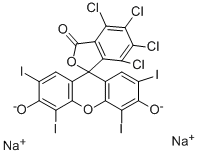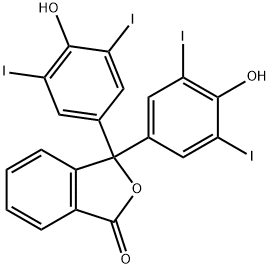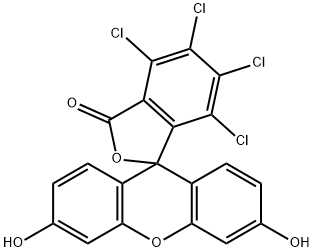ROSE BENGAL
Synonym(s):OSRC;pRb;RB;retinoblastoma 1
- CAS NO.:11121-48-5
- Empirical Formula: C20H2Cl4I4Na2O5
- Molecular Weight: 1017.64
- MDL number: MFCD00151169
- EINECS: 601-063-2
- SAFETY DATA SHEET (SDS)
- Update Date: 2025-01-27 09:38:02

What is ROSE BENGAL?
Chemical properties
Rose grows as a plant, shrub, bush or thicket. The flowers exhibit a five-petal calyx and a multiple five-petal corolla. Like the corolla, the seeds are inserted in the calyx. The plant is of Asiatic origin. Countries where rose is extensively cultivated for extractive purposes include Bulgaria, Turkey, Morocco, France and Italy. The parts used are the flowers, buds, leaves and fruit (hips). Rose has a deep, warm, rich rose odor with a slightly bitter, sharp flavor at high concentrations; pleasant on dilution. The fragrance of the rose flower, captured by extraction, is one of the most valuable flavor and fragrance products used. The most common aroma concentrates of rose are rose oil and rose water, derived from steam distillation; and rose concrete and rose absolute from solvent extraction. Of these, rose oil and rose concrete are produced in the largest quantities.
The choice of rose derivatives for flavor application is often determined by the feasibility of introducing water-soluble β-phenethyl
alcohol into the flavor complex. This component is present in large quantities in the extracts; it is almost absent in distillates and may,
therefore, have a significant effect on the resulting aroma
What are the applications of Application
Rose Bengal is a photosensitizer and dye
Definition
ChEBI: Rose bengal is an organic potassium salt that is the dipotassium salt of 2,3,4,5-tetrachloro-6-(2,4,5,7-tetraiodo-6-hydroxy-3-oxoxanthen-9-yl)benzoic acid. It has a role as a fluorochrome and a histological dye. It is a xanthene dye and an organic potassium salt. It contains a rose bengal(2-). It is functionally related to a fluorescin.
Essential oil composition
The main constituents of rose derivatives include linalool, β-phenethyl alcohol, l-citronellol, nerol, geraniol, eugenol, aldehydes, esters and stearopten (paraffins).
Purification Methods
This biological stain can be purified by chromatography on silica TLC using a 35:65 mix of EtOH/acetone as eluent. [Beilstein 19 II 261, 19 III/IV 2926.]
Properties of ROSE BENGAL
| storage temp. | Keep in dark place,Inert atmosphere,2-8°C |
| form | frozen liquid |
| color | clear colorless |
| EPA Substance Registry System | Rose Bengal (11121-48-5) |
Safety information for ROSE BENGAL
| Signal word | Warning |
| Pictogram(s) |
 Exclamation Mark Irritant GHS07 |
| GHS Hazard Statements |
H302:Acute toxicity,oral H315:Skin corrosion/irritation H319:Serious eye damage/eye irritation H335:Specific target organ toxicity, single exposure;Respiratory tract irritation |
| Precautionary Statement Codes |
P261:Avoid breathing dust/fume/gas/mist/vapours/spray. P305+P351+P338:IF IN EYES: Rinse cautiously with water for several minutes. Remove contact lenses, if present and easy to do. Continuerinsing. |
Computed Descriptors for ROSE BENGAL
New Products
Indole Methyl Resin tert-butyl 9-methoxy-3-azaspiro[5.5]undecane-3-carboxylate Boc-His(Boc)-OH 2-CTC Resin 4-Chloro-7-tosy1-7Hpyrrolo[2,3-d]pyrimidine 5,7-Dibromo-1H-indole 2,5-dichloro-N-hydroxy-4,6-dimethylpyridine-3-carboximidamide 2,2-Dimethoxy-7-azaspiro[3.5]nonane hydrochloride 4-chloromethyl-5-methyl-1,3-dioxol-2-one (DMDO-Cl) R-2-BENZYLOXY PROPIONIC ACID 1,1’-CARBONYLDIIMIDAZOLE 1,1’-CARBONYLDI (1,2-4 TRIAZOLE) N-METHYL INDAZOLE-3-CARBOXYLIC ACID 4-((2-hydroxyethyl)thio)benzoic acid 1-(TERT-BUTOXYCARBONYL)-2-PYRROLIDINONE Methyl 6-methylnicotinate 3-Pyridineacrylic acid tert-Butyl carbazate TETRAHYDRO-2H-PYRAN-3-OL 2-((4-morpholinophenylamino) (methylthio) methylene) malononitrile 3-(4-morpholinophenylamino)-5-amino-1H-pyrazole-4-carbonitrile 2,4-dihydroxybenzaldehyde 1,3-Diethyl-1,3-Diphenylurea Methyl 2-methylquinoline-6-carboxylateRelated products of tetrahydrofuran








You may like
-
 Retinoblastoma protein human CASView Details
Retinoblastoma protein human CASView Details -
 Pyridine 99.5% HPLC /UV SpectroscopyView Details
Pyridine 99.5% HPLC /UV SpectroscopyView Details
110-86-1 -
 Guanine , 99%View Details
Guanine , 99%View Details
73-40-5 -
 Piperazine Spot supply, best priceView Details
Piperazine Spot supply, best priceView Details
110-85-0 -
 Dibutyl PhthalateView Details
Dibutyl PhthalateView Details
84-74-2 -
 Imidazole Spot supply, competitive priceView Details
Imidazole Spot supply, competitive priceView Details
288-32-4 -
 Octadecyl 3-(3,5-di-tert-butyl-4-hydroxyphenyl)propionate 98% (GC)View Details
Octadecyl 3-(3,5-di-tert-butyl-4-hydroxyphenyl)propionate 98% (GC)View Details
2082-79-3 -
 Thiourea 99% ARView Details
Thiourea 99% ARView Details
62-56-6
